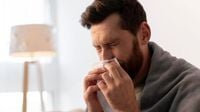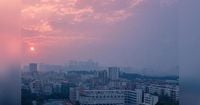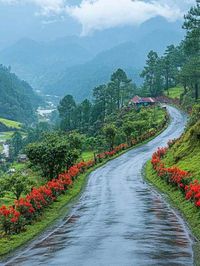Delhi’s Diwali, famed for its vibrant lights and festive spirit, has once again cast a dark shadow over the city’s air quality, leaving millions gasping as smog and toxic particles choke the capital and its neighboring regions. Despite Supreme Court orders permitting only green crackers for a limited period, many residents continued bursting firecrackers well past midnight on Diwali night, October 23-24, 2025. The aftermath? Air Quality Index (AQI) levels soared to alarming heights, with some areas recording readings above 1000—a level that’s not just unhealthy, but downright hazardous.
According to data reported by the Central Pollution Control Board (CPCB) and echoed by multiple news outlets, Delhi’s average AQI hovered around 400 in the days following Diwali, a classification considered ‘severe.’ In Anand Vihar, one of the city’s pollution hotspots, the AQI reached 421 even as the city average showed some improvement to the ‘poor’ category (292) by October 26. But these numbers only tell part of the story. In fact, 29 monitoring stations across the city continued to report ‘very poor’ air quality, with AQI readings well above 300, as per the CPCB’s Sameer app.
This spike in pollution came despite a dramatic 77.5% reduction in stubble burning incidents in neighboring Punjab and Haryana, attributed to massive floods that damaged crops and delayed the harvest season. Yet, as Business Standard and other outlets have noted, Delhi’s air remained thick with pollutants, suggesting that local sources—primarily firecrackers, vehicular emissions, and construction dust—played a major role in this year’s post-Diwali crisis.
What makes these numbers so worrisome? The World Health Organization recommends that PM2.5 levels—a key pollutant—should not exceed 15 micrograms per cubic metre over a 24-hour period. In some parts of Delhi, levels were found to be 24 times higher than this limit. Doctors and experts warn that such high concentrations of fine particles can penetrate deep into the lungs, triggering a cascade of health problems. As Dr. Amit Batra, Director of Neurology at Max Super Speciality Hospital, explained to Indian Express, “Air pollution is a hidden cause of sinus problems and migraines. Fine particles like PM2.5 and PM10, nitrogen oxides, and ozone irritate the nasal passages. This causes swelling in the sinuses, leading to blockage, facial pressure, congestion, and headaches. For migraine sufferers, these triggers can set off a full migraine attack.”
It’s not just those with chronic conditions who are at risk. A LocalCircles survey conducted in the wake of Diwali, with responses from over 44,000 residents across Delhi, Gurugram, Noida, Faridabad, and Ghaziabad, revealed that 25% of families had at least one member suffering from burning eyes, headaches, or difficulty sleeping due to pollution. A staggering 42% reported sore throats or persistent coughing. Hospitals across the city confirmed a sharp rise in cases of asthma, respiratory distress, and other pollution-related ailments. Dr. Akshay Budhraja, Senior Consultant & HOD, Respiratory & Sleep Medicine at Aakash Healthcare, told The Hindu, “After Diwali, there has been a noticeable rise in people complaining of persistent cough, breathlessness, and irritation in the throat and eyes. Those with pre-existing conditions like asthma or chronic bronchitis are particularly affected, with several requiring stronger medication or nebulization.”
Experts like Dr. Pallavi Periwal, Senior Consultant, Pulmonary Medicine & Critical Care at AANCH Hospital, point to a combination of factors behind this post-festival spike. “The AQI has significantly deteriorated not just on Diwali night but continues to remain poor in the days that follow. The residue from firecrackers tends to linger in the atmosphere. With the onset of winter and dropping temperatures, these pollutants get trapped closer to the ground.” When wind movement slows, pollutants accumulate rather than disperse, creating a dense toxic cloud that can linger for days.
For sensitive groups—children, the elderly, pregnant women, and those with asthma or heart disease—the risks are even greater. Dr. P. Raghavendra Reddy, Consultant Interventional Pulmonologist at Renova Hospitals, Hyderabad, warns, “It’s quite likely that AQI levels will remain elevated, or even worsen, in the days following Diwali.” Even healthy individuals have reported symptoms, with some experiencing respiratory issues for the first time. “I woke up with burning eyes and a constant cough that just wouldn’t stop,” shared Seema Nair, a teacher from Mumbai, with The Hindu. “Even my kids have been wheezing since Diwali night. The smog in the morning is especially terrible.”
So, what can residents do? Doctors recommend staying indoors during peak pollution hours, using N95 masks outdoors, investing in air purifiers, and maintaining good hydration. “Managing sinus health and avoiding known triggers can significantly reduce headaches and migraines caused by pollution,” advises Dr. Aditya Gupta, Director of Neurosurgery at Artemis Hospital, Gurugram. The Mayo Clinic also suggests using saline nasal sprays to keep the nasal passages moist and avoiding outdoor exercise when the smog is thickest.
But the health effects go beyond the immediate. Long-term exposure to polluted air can lead to reduced lung function, chronic sinus issues, respiratory infections, and even neurological problems. Pollution can also worsen pre-existing conditions like asthma, heart disease, and chronic respiratory illnesses. “The air this year has remained hazy and smoky for a longer period, making symptoms more intense and widespread compared to last year,” noted Dr. Budhraja.
Not all of India is suffocating, though. As India Today and other outlets point out, several hill stations and coastal towns—such as Munnar, Coorg, Gangtok, Shillong, and Aizawl—still offer clean, fresh air. For those able to travel, these destinations provide a much-needed escape from the suffocating haze blanketing city skylines. Mountain breezes and green valleys can soothe stressed lungs and rejuvenate weary bodies.
Still, experts stress that individual and civic action is crucial. Reducing vehicular emissions, enforcing cracker bans, and investing in green infrastructure are no longer optional. As Dr. Budhraja sums up, “Each Diwali we celebrate light, but we also ignite a cycle of respiratory suffering that outlasts the festival. Unless we collectively change our habits, we’ll be celebrating under a choking sky.”
As Delhians brace for more days of poor air, with weather forecasts predicting only a slight improvement due to possible light rain or drizzle, the city’s struggle with pollution remains a stark reminder: The true cost of celebration isn’t just measured in joy, but in the breaths we struggle to take the morning after.


